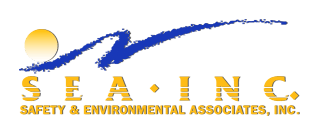From Risk to Resilience: How Smart Safety Practices Protect Your People and Your Profits
Workplace safety can often be overlooked in fast-paced environments, especially when deadlines loom and production pressures mount. However, ignoring safety doesn’t just put people at risk; it also costs companies hundreds of millions of dollars annually in lost time, medical expenses, and diminished productivity. According to the U.S. Bureau of Labor Statistics, over 2,000 eye injuries occur daily in American workplaces, costing more than $300 million each year. These statistics reveal a straightforward truth: organizations that neglect safety also risk compromising their profitability, employee morale, and long-term reputation. But here’s the good news—building a stronger safety culture doesn’t require a complete overhaul. With the right approach and leadership commitment, organizations can quickly turn things around.
1. Lead with Safety from the Top
A true culture of safety starts at the highest levels. Executives and managers must visibly champion safety values and set an example through their actions. When leadership is consistent about prioritizing safety, it signals to employees that it’s a non-negotiable part of the company’s DNA. One SEA client utilized the A3 problem-solving method—a lean management tool originally developed by Toyota—to successfully transform their safety culture. This method involves defining a safety issue, analyzing root causes, setting goals, and mapping solutions with a clear action plan. By using A3, leadership engaged front-line workers in the problem-solving process, which not only improved compliance but also increased ownership and long-term engagement in safety.
2. Ask the Right Questions—And Listen
Safety surveys are a valuable tool to understand how employees perceive current safety policies. Do they feel supported? Are they confident in procedures? Anonymous feedback can reveal blind spots and guide targeted improvements. It also makes employees feel heard, which strengthens engagement and trust. In one SEA-led engagement, a client held listening sessions with longtenured workers, many of whom shared that they had previously recommended a specific type of respirator. At the time, the suggestion was acted upon, which was the correct response. Years later, as processes changed and new risks emerged, those same respirators became necessary. This illustrates the importance of not only gathering and acting on feedback but also maintaining an ongoing dialogue as systems change. What doesn’t make sense today might be critical tomorrow. Safety leadership must recognize that feedback— especially on PPE—can become relevant again as tasks, materials, and exposure conditions evolve.
3. Make Safety a Daily Habit
Pre-shift huddles are more than just a quick meeting—they’re a daily opportunity to embed safety into the rhythm of your operations. These short, focused gatherings help teams align on potential hazards, address recent near misses, and clarify safe operating procedures before work begins. One SEA client in the manufacturing sector dramatically reduced firsthour incidents by introducing five-minute morning safety check-ins. Supervisors used the time not only to deliver updates but also to invite feedback on yesterday’s challenges, turning passive reminders into active dialogue. These micro-moments help normalize safety thinking and demonstrate to employees that leadership is paying attention every day, not just after an audit or an injury.
4. Hold Personal Conversations
While team meetings create shared understanding, one-on-one conversations build individual trust. Some employees may hesitate to voice safety concerns in front of peers or may not realize a recurring task poses a risk until they’re asked directly. Private, judgment-free discussions allow supervisors to uncover the unspoken issues that formal audits often miss. For example, an SEA client conducting quarterly one-on-one meetings with operations personnel identified several concerns related to Lockout/Tagout (LOTO) procedures. Due to outdated, modified equipment and unclear instructions, workers had developed informal workarounds that bypassed key steps in LOTO compliance. While their intent was to keep production moving, these shortcuts created serious safety risks. Through these individual conversations, the company identified the need to revise its procedures, retrain staff, and invest in equipment upgrades—all actions that directly reduced the potential for injuries and built trust in leadership.
5. Train Continuously, Not Occasionally
Ongoing safety training is the backbone of a resilient organization. Regular instruction helps employees recognize hazards, follow best practices, and take decisive action when something isn’t right. It also reinforces that safety is a shared responsibility, not just a box to be checked on a form. At SEA, we encourage a simple model: Show - employees how to do tasks safely, Teach - the standards and rationale behind safe practices, help them answer this simple question, “What is in it for me?” and don’t give them the lame answer that you go home at the end of the day with all your fingers, give them a true, heartfelt answer that fits them, and Assist - them with coaching until they demonstrate competency. Every task, incident, or walk-through is an opportunity to reinforce this learning.
6. Monitor Safety Metrics That Matter
A mature safety culture tracks more than just injury logs. Leading, lagging, and predictive indicators help organizations identify trends, assess effectiveness, and prevent incidents before they occur:
- Leading: Number of safety observations, completed toolbox talks, and employee participation in training.
- Lagging: OSHA recordables, lost-time injury rates, workers’ compensation claims.
- Predictive: Near misses, audit findings, and reported unsafe conditions before harm occurs. For example, tracking frequent near misses at a specific machine—like tools falling or workers stepping into the line of fire—can indicate a pattern of unsafe setup, poor ergonomics, or rushed procedures. Though no one has been injured yet, these close calls are precursors to a likely future incident if not addressed. That’s what makes them predictive: they signal underlying conditions or behaviors that statistically lead to harm unless action is taken.
By Derek Jennings, President SEA



